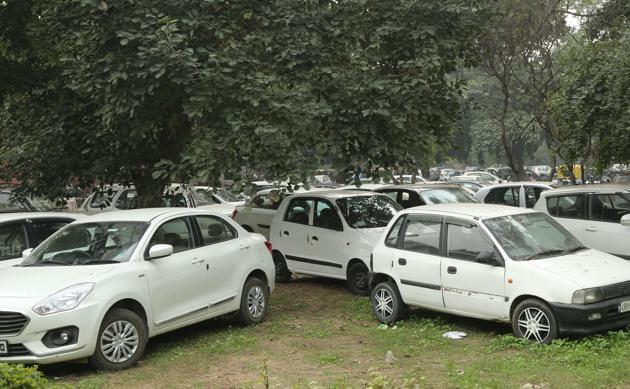Six judicial officers’ signs forged to release 60 impounded vehicles in Chandigarh
The matter came to light when some vehicles were released despite cases pending in courts and traffic police officials found that the number of vehicles impounded within the specified period for drink-driving and the ones released were not adding up
Chandigarh A major racket has surfaced with the discovery that signatures of six judicial officers in the Chandigarh district court could have been forged to release 60 vehicles — impounded for drunken driving and non-availability of documents — within 10 days in November 2019, highly placed court and traffic police sources have said. A probe into the matter has been marked by the district and sessions judge.

Sources said former chief judicial magistrate (CJM) Abhishek Phutela had written a letter about the forgery by the end of 2019 to district and sessions judge Paramjeet Singh. Following this, an inquiry was marked in February to the inquiry officer, Sushil Kumar Garg. He is posted as special judge, Central Bureau of Investigation.
A court official who spoke on condition of anonymity as he’s not authorised to speak to the media said:“It happened last year, when within 10 days in November at least 60 release orders of impounded vehicles were issued by forging signatures of six judicial magistrates first class and misusing the court’s stamp and other records.”
Numbers didn’t add up
The matter came to light when some vehicles were released despite cases pending in courts and traffic police officials found that the number of vehicles impounded within the specified period for drink-driving and the ones released were not adding up.
“It was found that for 56 vehicles, the challans were not put up or disposed of by the courts, and some challans were still pending even as the impounded vehicles were released from Traffic Lines in Sector 29 and the Children’s Traffic Park in Sector 23. Four challans were also not traceable in the records maintained by the court, so related fines were also not deposited,” an official privy to the matter said.
Adding that the needle of suspicion pointed to the court staff — ahlmads (execution clerks), munshis (clerks) and others including advocates, the official said it appeared to be a bigger racket even though they had data of only 10 days.
Report out this week
Investigations were continuing with the report expected to be submitted anytime during the week, sources said.
Confirming the probe, traffic police officials, when contacted, said that on November 25, 2019, the CJM’s court had asked for records of 250 vehicles and later, on February 12, 2020, a letter was received from the inquiry officer seeking details of 60 vehicles. The traffic police had submitted to the court the details on February 14, including the despatch numbers of the impounded vehicles with the name and phone numbers of the persons who collected the released vehicles.
Deputy superintendent of police (DSP, traffic administration) Kewal Krishan also confirmed that the traffic police were investigating the matter. However, he refused to comment further.
A senior traffic police official who wished to remain anonymous said it was lapse on the court officials’ part, particularly those who were issuing these release orders.
“The 60 vehicles were challaned for offences such as drink-driving and non-availability of documents. Whenever release orders come to us we check the order for the stamp of the chief judicial magistrate (CJM), without which no vehicle is let off. If the fine wasn’t deposited with the court, the release orders must have been faked,” he said.
The offenders appear to have evaded fines amounting to at least ₹3 lakh as under the amended Motor Vehicles (MV) Act, the fine for drunken driving is ₹10,000, while non-availability of documents can net fines from ₹5,000 to ₹25,000.
When contacted, Paramjeet Singh, district and sessions judge, Chandigarh, refused to comment on the issue. However he said: “As a part of routine administrative process, we keep conducting inquiries, but until we come to any conclusion we do not comment.”






